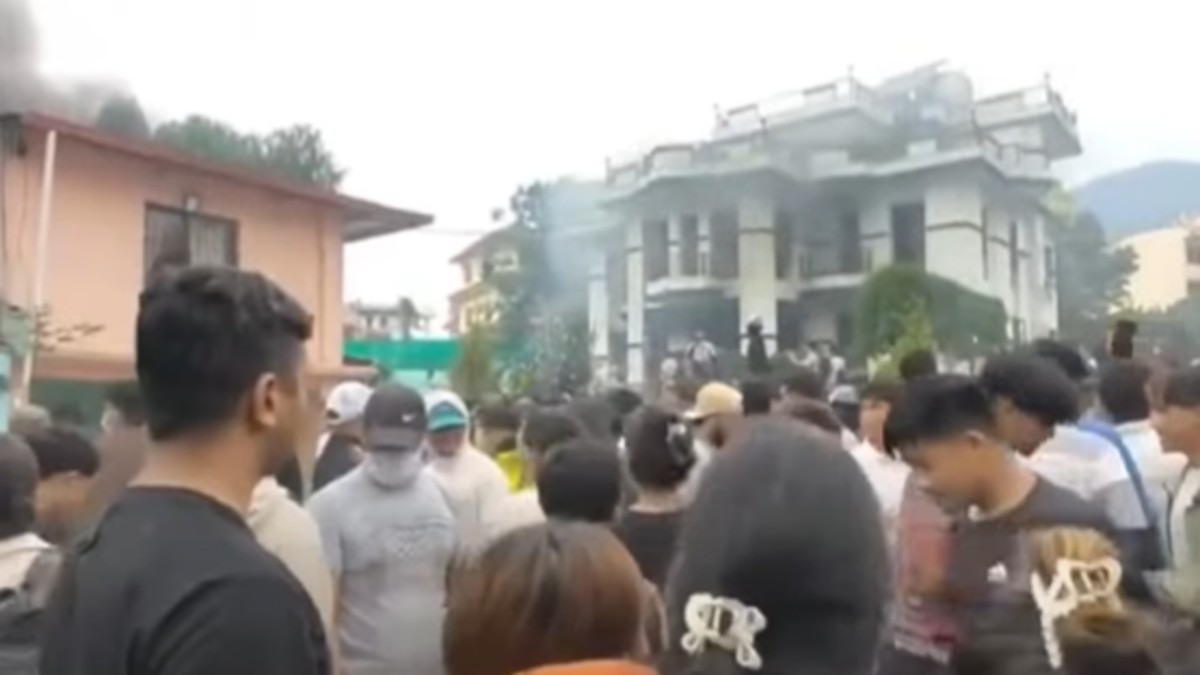Nepal’s Gen Z Revolution: From Hashtags to History — What Comes After the Uprising?
It wasn’t just another protest. It was a generational reckoning. In the heart of Kathmandu, thousands of young Nepalis—students, artists, coders, and dreamers—took to the streets not with weapons, but with conviction. Their demand wasn’t just the restoration of social media. It was a call to dismantle a system that had ignored, exploited, and underestimated them for far too long. Uniformed school kids marched beside university scholars. Placards clashed with riot shields. And in that moment, Nepal’s Gen Z didn’t just protest—they performed democracy.
The Trigger: A Digital Muzzle
The spark was simple, but symbolic. The government’s decision to block access to major social media platforms was seen as more than a technical regulation—it was a silencing of voices. For a generation raised on reels, hashtags, and livestreams, this wasn’t just inconvenient. It was personal. Social media had become their town square, their protest stage, their truth-telling tool. The ban felt like a betrayal. And in trying to suppress dissent, the government inadvertently amplified it. Encrypted apps lit up. VPNs surged. And within hours, the youth had mobilized—digitally first, physically next.
The Movement: Organized, Not Chaotic
his wasn’t a random outburst. It was a meticulously coordinated civic uprising. Young leaders emerged—not from political parties, but from classrooms and community groups. They didn’t wear khadi. They wore backpacks. Protesters were asked to carry books, wear uniforms, and chant slogans that blended satire with rage. The message was clear: We are the future, and we refuse to inherit your broken system. The term “Nepo Kids” became a rallying cry against political dynasties. Social media was flooded with exposés of lavish lifestyles, foreign degrees, and unchecked privilege. The youth weren’t just angry—they were informed.
The Cost of Courage
What began as peaceful resistance quickly turned tragic. Clashes erupted. Tear gas filled the air. And lives were lost. Young bodies fell on the same streets they had hoped to reform. But even in grief, the movement didn’t falter. Candlelight vigils replaced marches. Art installations replaced slogans. The pain became poetry. And the revolution found new rhythm. Parents who once feared for their children’s safety now stood beside them. Elders who had given up on change found hope in the chants. The youth had become the conscience of the nation.
Collapse of the Old Guard
The Parliament, once a symbol of democracy, now stood as a monument to neglect. The Supreme Court, once revered, was questioned. The very institutions meant to protect the people had become distant, opaque, and unaccountable. And yet, amidst the chaos, a new clarity emerged: Nepal’s youth weren’t just protesting policies—they were rejecting politics as usual.
A Regional Echo
Nepal’s uprising didn’t happen in isolation. Across South Asia, youth movements have been gaining momentum. From economic crises to censorship crackdowns, the region’s young citizens are increasingly refusing to stay silent. What makes Nepal’s moment unique is its spontaneity. No celebrity endorsements. No party affiliations. Just raw, unfiltered civic energy. It’s a reminder that democracy isn’t just about voting—it’s about voicing. And Gen Z, with its digital fluency and moral clarity, is redefining what civic engagement looks like.
The Road Ahead: Protest Is Just the Beginning
Toppling a government is dramatic. But building a better one is difficult. The real challenge now lies in transition—from resistance to reform.
Nepal’s youth must now:
- Create platforms for policy dialogue
- Demand transparency in governance
- Push for youth quotas in Parliament
- Advocate for digital rights and freedom of expression
- Monitor the rebuilding of institutions with vigilance
This isn’t about replacing faces. It’s about reshaping frameworks. The revolution must now become a roadmap.
Diaspora and Global Solidarity
Nepal’s youth abroad—students in Delhi, engineers in Dubai, artists in New York—have a role to play. They can amplify voices, fund grassroots efforts, and challenge global institutions to support Nepal’s democratic transition. Tech companies must also reflect. If their platforms were used to organize dissent, they must now ensure they aren’t used to suppress it. Algorithms must serve truth, not tyranny.

